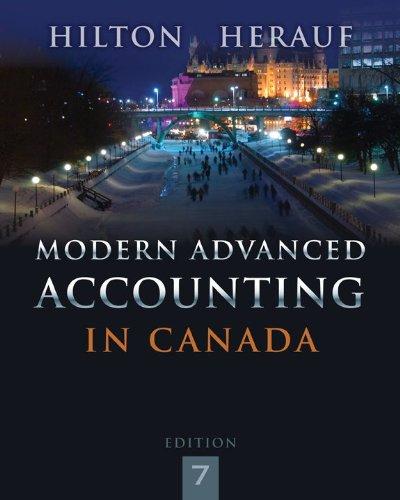The balance sheets of E Ltd. and J Ltd. on December 30, Year 6, were as follows:
Question:
.png)
On December 31, Year 6, E Ltd. issued 350 shares, with a fair value of $40 each, for 70% of the outstanding shares of J Ltd. Costs involved in the acquisition, paid in cash, were as follows:
Costs of arranging the acquisition ..... $2,500
Costs of issuing shares ......... 1,600
$4,100
The carrying amounts of J Ltd.€™s net assets were equal to fair values on this date except for the following:
Fair value
Plant assets ..... $65,000
Long-term debt .... 40,000
E Ltd. was identified as the acquirer in the combination.
Required:
(a) Prepare the consolidated balance sheet of E Ltd. on December 31, Year 6, under each of the following:
(i) Proprietary theory
(ii) Parent company theory
(iii) Parent company extension theory
(iv) Entity theory
(b) Calculate the current ratio and debt-to-equity ratio for E Ltd. under the four different theories. Explain which theory shows the strongest liquidity and sol vency position and which method best reflects the true financial condition of the company.
Balance sheet is a statement of the financial position of a business that list all the assets, liabilities, and owner’s equity and shareholder’s equity at a particular point of time. A balance sheet is also called as a “statement of financial...
Step by Step Answer:

Modern Advanced Accounting In Canada
ISBN: 9781259066481
7th Edition
Authors: Hilton Murray, Herauf Darrell





